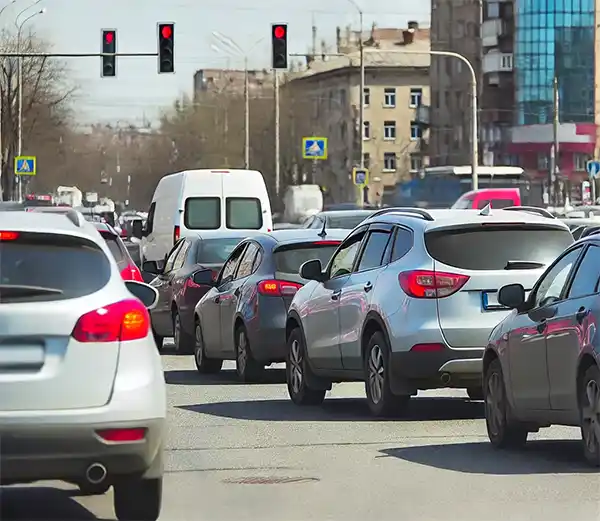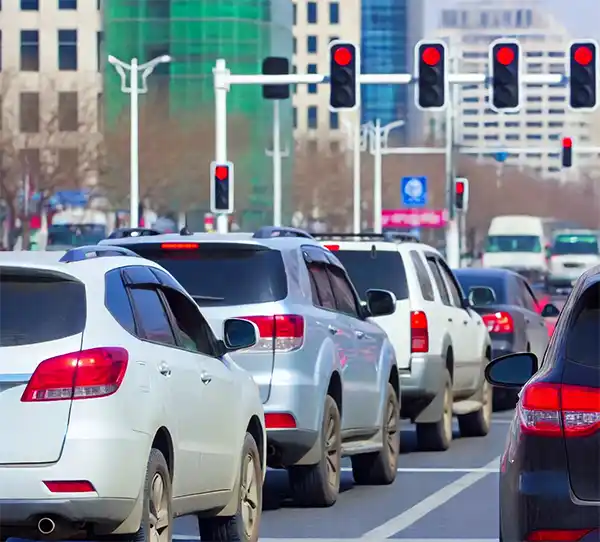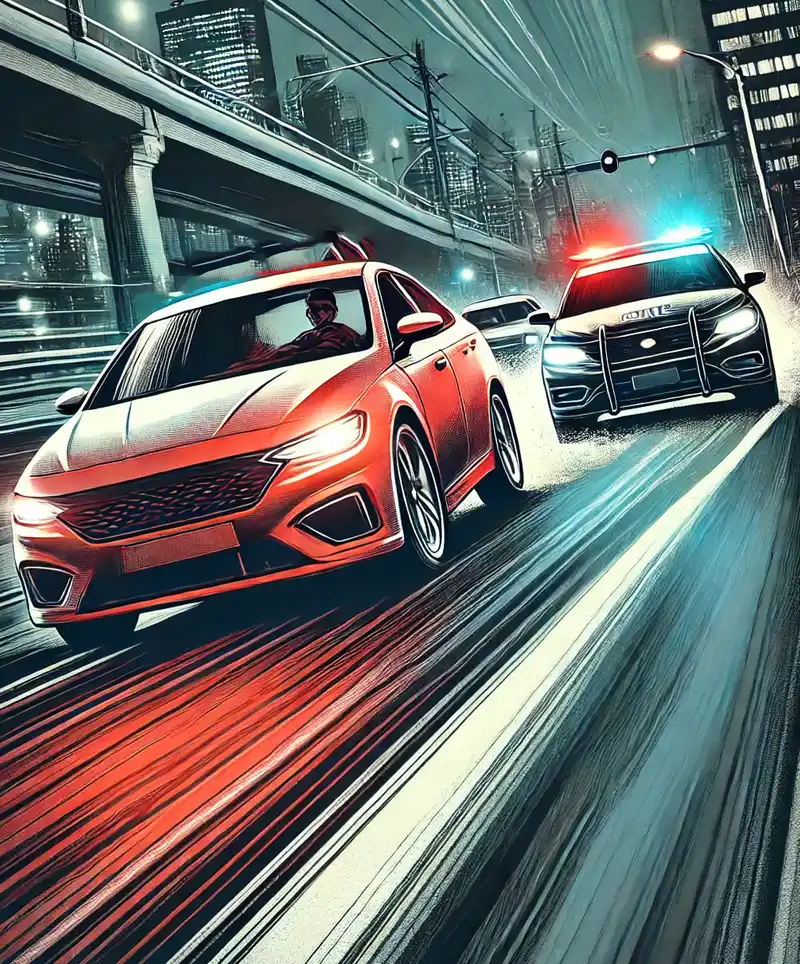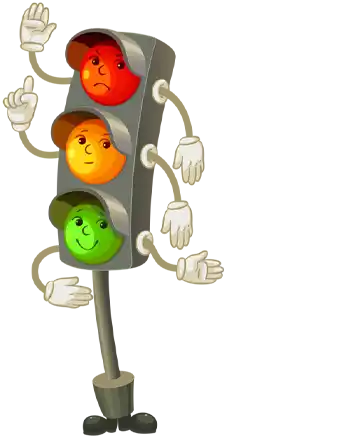Celebrating the Art of Stopping
Every year, the first week of August is dedicated to a vital yet often overlooked aspect of road safety: stopping at red lights. Stop on Red Week is all about reminding drivers of the importance of obeying traffic signals. It’s a week to appreciate the power of the red light, which does more than just annoy drivers in a hurry—it saves lives. So buckle up and get ready for a red-light rundown that's as entertaining as it is informative.
The Origins of Stop on Red Week
The inception of Stop on Red Week is rooted in a growing concern for road safety and the alarming statistics associated with red-light running. The Federal Highway Administration (FHWA) spearheaded the campaign, recognizing the need for a dedicated time to emphasize the importance of stopping at red lights. The initiative was launched in the late 1990s, a period when the rate of accidents at intersections was notably high, and public awareness around the issue was relatively low.
The FHWA, in collaboration with various traffic safety organizations and law enforcement agencies, identified that a significant portion of intersection-related accidents were preventable. They realized that a focused, nationwide effort was required to educate drivers, change behaviors, and ultimately save lives. This led to the establishment of Stop on Red Week, strategically placed in the first week of August to catch drivers’ attention during the busy summer travel season.
 The campaign was designed to be multifaceted, involving public service announcements, community events, and educational programs aimed at both adults and children. The goal was not only to reduce the number of red-light running incidents but also to foster a culture of respect for traffic signals and an understanding of their critical role in road safety. By promoting Stop on Red Week, the FHWA sought to create a lasting impact on driving habits and to encourage communities across the country to take proactive measures in improving intersection safety.
The campaign was designed to be multifaceted, involving public service announcements, community events, and educational programs aimed at both adults and children. The goal was not only to reduce the number of red-light running incidents but also to foster a culture of respect for traffic signals and an understanding of their critical role in road safety. By promoting Stop on Red Week, the FHWA sought to create a lasting impact on driving habits and to encourage communities across the country to take proactive measures in improving intersection safety.
Over the years, Stop on Red Week has gained momentum, with more states and localities participating and adopting innovative approaches to spread the message. From interactive digital campaigns to local safety workshops, the initiative has evolved to keep pace with changing technologies and communication methods. The enduring success of Stop on Red Week lies in its ability to engage diverse audiences and to continually reinforce the lifesaving importance of a simple act: stopping on red.
Why Stop on Red? The Serious Side of Safety
Red lights are more than just colorful interruptions in your commute. They are critical safety devices designed to regulate traffic flow and prevent collisions. According to the Insurance Institute for Highway Safety (IIHS), red-light running is a leading cause of urban crashes. In 2019 alone, red-light running resulted in 846 fatalities and an estimated 143,000 injuries. Clearly, stopping on red is no trivial matter.
The Mechanics of a Traffic Light
Traffic lights, those unassuming sentinels of the road, are far more complex than they appear. Beneath their straightforward red, yellow, and green exterior lies a sophisticated system designed to manage the chaotic ballet of urban traffic.
At its core, a traffic light system comprises three main components: the signal heads (the lights themselves), the controller unit (the brains of the operation), and the detection system (the eyes on the road). The signal heads are what drivers see—the familiar trio of colored lights mounted on poles or suspended above intersections. Each light is equipped with highly durable LED bulbs or traditional incandescent bulbs, designed to be visible in all weather conditions.
The real magic happens in the controller unit, typically housed in a sturdy cabinet nearby. This unit processes information from the detection system and implements pre-programmed signal timings or adaptive algorithms. It decides which light to display and for how long, ensuring an orderly flow of traffic. Controllers can be as simple as fixed timers or as advanced as computer systems running sophisticated traffic management software.
Detection systems are the unsung heroes of modern traffic lights. These systems include various technologies such as inductive loop sensors, cameras, infrared sensors, and even radar. Inductive loop sensors, for instance, are installed in the pavement and detect vehicles through changes in inductance caused by the presence of metal. Cameras and infrared sensors provide real-time visual data, while radar systems can detect vehicle speed and distance.
When a vehicle approaches an intersection, the detection system sends signals to the controller unit, which processes the data and adjusts the light timings accordingly. This responsiveness is crucial during peak hours when traffic volumes fluctuate rapidly. Advanced systems can even communicate with each other to synchronize lights across multiple intersections, reducing congestion and improving overall traffic flow.
Moreover, modern traffic lights are increasingly being integrated into smart city frameworks. These smart traffic lights can communicate with connected vehicles, providing drivers with real-time updates on light changes or potential hazards ahead. They can also adapt to unusual traffic patterns caused by events or emergencies, optimizing the flow and ensuring safety.
In addition to vehicle detection, some systems include pedestrian detection features. These might involve push buttons at crosswalks, or advanced sensors that detect pedestrians waiting to cross, ensuring that everyone, not just drivers, can navigate intersections safely.
 The continual evolution of traffic light technology reflects the growing complexity of our urban environments. As cities expand and traffic volumes increase, these systems are becoming ever more critical in managing road safety and efficiency. Understanding the intricate mechanics behind traffic lights reveals just how much thought and engineering goes into those moments we often take for granted, sitting at an intersection waiting for the light to change.
The continual evolution of traffic light technology reflects the growing complexity of our urban environments. As cities expand and traffic volumes increase, these systems are becoming ever more critical in managing road safety and efficiency. Understanding the intricate mechanics behind traffic lights reveals just how much thought and engineering goes into those moments we often take for granted, sitting at an intersection waiting for the light to change.
Red-Light Running
Despite the clear dangers, red-light running is a common occurrence. Some drivers view red lights as mere suggestions, while others are so engrossed in their phones or daydreams that they don’t notice the light change. Here are a few humorous (yet all too real) scenarios that highlight the absurdity of red-light running:
- The Early Bird: This driver stops at a red light only to bolt forward the moment the light turns yellow. It’s like they’re playing a game of “who can ignore the rules the fastest.”
- The Multitasker: Caught updating their social media status, they sail through the intersection, oblivious to the honks and glares.
- The Optimist: They speed up as the light turns yellow, convinced they can beat it. Spoiler alert: they usually can’t.
Making Safety Fun
Stop on Red Week isn’t just about stern warnings and grim statistics. It’s also a time to engage the community in fun and educational activities that promote traffic safety. Here are a few ways to get involved:
- Red Light Races: Host a go-kart race where participants must stop at simulated red lights. The twist? Instant disqualification for running a red light.
- Creative Campaigns: Schools and local organizations can hold poster contests, encouraging kids to design eye-catching safety posters about stopping on red.
- Community Events: Organize safety fairs with interactive exhibits, driving simulators, and guest speakers from local law enforcement.
- Social Media Challenges: Use hashtags like #StopOnRed and #RedLightHeroes to share stories, photos, and videos that emphasize the importance of obeying traffic signals.
Smarter, Safer, Greener
As technology advances, so do our traffic lights. Modern traffic systems are becoming increasingly sophisticated, with the integration of AI, smart sensors, and connected vehicle technology. These innovations promise to make intersections safer and more efficient. Imagine traffic lights that can adjust their timing based on real-time traffic conditions or communicate directly with your car to prevent accidents. The future of stopping on red is bright—ironically enough.
Stop on Red Week serves as a crucial reminder of the importance of traffic safety. It’s a time to reflect on our driving habits and appreciate the role of red lights in keeping our roads safe. So the next time you’re tempted to speed through an intersection or roll your eyes at a red light, remember: stopping on red isn’t just about following the rules; it’s about saving lives. Embrace the red light, because sometimes, the best way to move forward is to stop.
Please Share our Content






 The campaign was designed to be multifaceted, involving public service announcements, community events, and educational programs aimed at both adults and children. The goal was not only to reduce the number of red-light running incidents but also to foster a culture of respect for traffic signals and an understanding of their critical role in road safety. By promoting Stop on Red Week, the FHWA sought to create a lasting impact on driving habits and to encourage communities across the country to take proactive measures in improving intersection safety.
The campaign was designed to be multifaceted, involving public service announcements, community events, and educational programs aimed at both adults and children. The goal was not only to reduce the number of red-light running incidents but also to foster a culture of respect for traffic signals and an understanding of their critical role in road safety. By promoting Stop on Red Week, the FHWA sought to create a lasting impact on driving habits and to encourage communities across the country to take proactive measures in improving intersection safety. The continual evolution of traffic light technology reflects the growing complexity of our urban environments. As cities expand and traffic volumes increase, these systems are becoming ever more critical in managing road safety and efficiency. Understanding the intricate mechanics behind traffic lights reveals just how much thought and engineering goes into those moments we often take for granted, sitting at an intersection waiting for the light to change.
The continual evolution of traffic light technology reflects the growing complexity of our urban environments. As cities expand and traffic volumes increase, these systems are becoming ever more critical in managing road safety and efficiency. Understanding the intricate mechanics behind traffic lights reveals just how much thought and engineering goes into those moments we often take for granted, sitting at an intersection waiting for the light to change.








 "Sláinte!" is a traditional Irish expression used as a toast, equivalent to "Cheers!" in English.
"Sláinte!" is a traditional Irish expression used as a toast, equivalent to "Cheers!" in English.